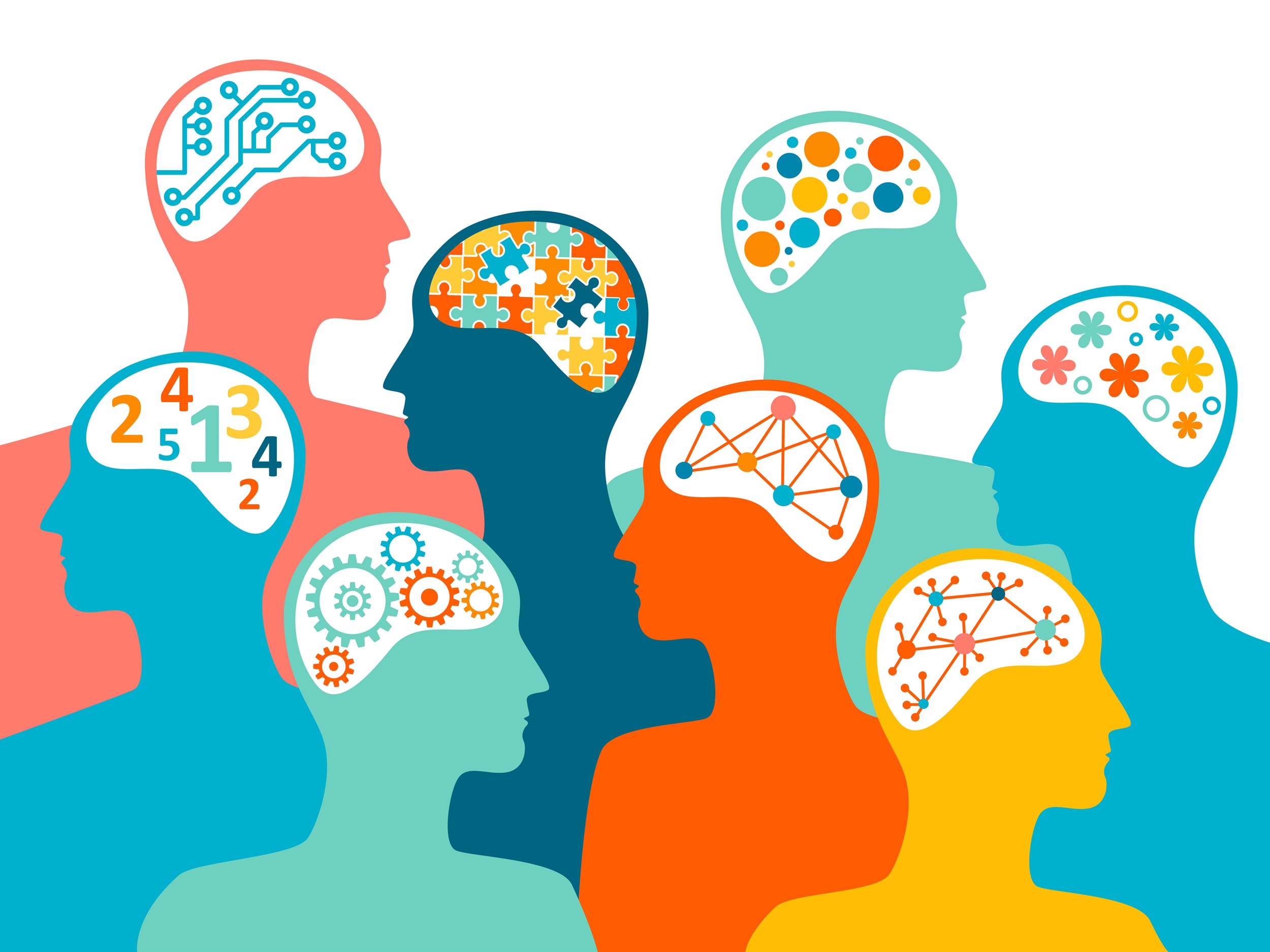Understanding Autistic Human Services Workers
Understanding Autistic Human Services Workers
By: Sarah Southey
June 2024

Often, autistic individuals are overlooked for roles in helping professions, yet, recent research that examines autistic educators, nurses, librarians and doctors, demonstrate that those with lived experience are proud of their workplace contributions in helping professions, especially in relation to supporting autistic service users.1-4 Further, human services boast inclusive values and ethics, which might draw autistic workers towards the field.
In this article, I will provide a brief overview of autism in the workplace and describe challenges and recommendations that can be implemented to foster neurodivergent inclusion in human services organizations.
Key Terms and Language
Autism is diagnosed in approximately 1 in 66 Canadian children and youth, and impacts the way people move, think and communicate. 5-6 Autism doesn’t stop at childhood, and influences individuals across their lifespans. Many autistic individuals advocate for the use of identity first language, so autistic individual will be used throughout this article.
Neurodivergent/Neurodivergence describes when individuals have cognitive profiles that diverge from the established, socially constructed norm and include profiles include conditions such as ADHD, autism and learning disabilities.
Autism In the Workplace
Approximately 80% of autistic Canadians experience unemployment and underemployment.7 Stereotypes and stigma that frame autistic workers as a ‘problem’ and connect accessibility to inefficiency are likely to contribute to autistic un/underemployment. In a recent survey conducted by the Institute of Leadership and Management in the United Kingdom (2022), 32% of managers said they would not be comfortable hiring autistic talent.8 In contrast, studies have found that most supervisors rate the job performance of their autistic employees as average or above average. 9 In our current landscape, ignorance towards neurodiversity causes exclusionary behaviour and non-inclusive workplaces.
Over the past decade, the autism community has called on employers to shift their thinking about neurodivergent employees. The value neurodivergent employees offer can outweigh associated challenges. Employers should consider incorporating and aligning with a neurodiversity affirming perspective that celebrates differences and disrupts ableist assumptions about autistic employees.

Arguments based on these findings call on employers to harness neurodivergent potential by valuing novel and unique outputs, which arise from individuals' different perspectives and different ways of thinking. Hiring neurodivergent talent also positively impacts leaders, as managers in one study claim that participating in neurodiversity employment programs ‘makes them better managers’. 11 While these studies focus on building the business case for autism, this type of generalized thinking also risks reinforcing stereotypes, 12 potentially leading to discrimination. It is important to consider strengths and challenges of autistic workers individually.
Autism in Helping Professions
While the above section broadly describes autism in the context of employment, below I will describe nuances of workplace inclusion for autistic individuals working in helping professions. Although there were not any studies found that describe human services work explicitly, insight can be gained by reflecting on research from related helping professions.
Autism as a Strength in Client-Facing Helping Roles
Several studies identify the value associated with having autistic workers in helping roles. 4, 13-14 Teachers shared that they are better teachers because of their autism, especially when supporting autistic students. 4, 13 Two studies on doctors suggest that communication is enhanced between autistic doctors and patients when doctors are open about their autism and there is a calling for the medical field to create more opportunities for such disclosure. 13, 15 These studies describe direct benefits to the autism community. Like doctors and educators, human services workers also interface with autistic individuals; therefore, there is a need to understand inclusion for autistic workers in these roles.
Identity and Disclosure Considerations
There are a few identity and disclosure considerations for autistic helping professionals. For example, some describe autism as a neurotype with many strengths rather than a disability. 2-3 Further, in some circumstances autistic helping professionals do not hold formal diagnoses. 2-3, 13 It is likely that those who self-diagnose are not currently considered in most workplace inclusion policies. In the case of health care professionals, public awareness campaigns, medical literature, and diagnoses of family members are prompting a ‘lost generation’ of autistic health care professionals to recognize their own autistic traits. 13 Factors affecting decisions to disclose include age at diagnosis, social demands of the job, and workplace policies. 16 It is important to make space for participants to self-define their autistic identities as disclosing in the workplace can lead to greater acceptance, awareness, accessibility and inclusion.
Communication Challenges and Recommendations
Challenges in expressive communication for autistic employees included difficulty finding the right words, expressions, and tone of voice; being expected to respond spontaneously; knowing how to start and end conversations; and a frequent feeling that others do not understand what they are trying to convey was cited in a study focusing on the experiences of autistic educators (Jones, 2022). 17 A suggestion from autistic educators for peers and employers to reduce such obstacles include prioritizing clear, concise communication by setting meetings with a clearly defined purpose. 18 Autistic doctors cautions that autistic people tend to communicate better with other autistic people and non-autistic people communicate better with other non-autistics, and therefore, when the two neurotypes communicate together, misunderstandings occur.15 Significant effort to understand different communication styles is central to inclusive employment practice.
Experiences of Stigma and Discrimination, and Recommendations
Autistic helping professionals feel overlooked for roles and stigmatized. One study describes autistic doctors perceiving to be automatically deemed unsuited by others to their careers. 3 Yet workplace challenges for autistic doctors are rarely related to patient care. 13 This research into doctors points to the issue of stereotypical role alignment, which extends to multiple professions. Helping professionals are fearful of being treated differently which may prevent them from talking openly about their autism.2
At the individual employee level, reconsidering traditional performance evaluation could be helpful in better understanding autistic human services workers’ desire for career growth. The concept of job matching or job carving in which individual’s skills are considered and roles are developed or matched for individuals through such processes as opposed to traditional application and hiring processes may also be advantageous for autistic human services workers and their organizations.
The impact of supervisors’ and coworkers’ knowledge and awareness of autism is important to workplace inclusion. Autistic workers in helping professions report direct acts of discrimination, such as receiving negative feedback without corresponding advice and support to address such feedback,2-3 and dismissal.19 Below is a Canadian resource your organization can consider for neurodiversity training:
Co-Occurring Mental Health Challenges and Recommendations
Autistic individuals often live with co-occurring mental health conditions. Further, human services work is known to be stressful and can lead to burnout. Autistic teachers describe burnout related to concealing their autistic traits (known as masking or camouflaging). 4 Because of the intersections of potential burnout due to the role/job demand for human services, compounded with autistic masking or camouflaging, significant attention must be paid to mental health in training and other workplace wellness initiatives.
Sensory Sensitivities and Recommendations
In addition to mental health, autistic helping professions describe coping with sensory sensitivities as leading to feelings of being overwhelmed. 4,13-14, 17-18 Sensory considerations in managing interpersonal interactions and in physical aspects of work—such as bright lights and noises—were identified as a challenge.17 Some aspects of sensory sensitivities can be addressed through universal design for learning (UDL) strategies including lowering lights and optimizing quiet working spaces. Such adaptations may be helpful for all employees.
Researching Autistic Workplace Inclusion in Human Services
This article has highlighted the significance of workplace inclusion for autistic helping professionals and argues that we need to better examine the human services field to expand autistic workplace inclusion initiatives and supports. My doctoral dissertation study focuses on gaining insight from autistic human services workers to better understand these issues. Should you identify as autistic and are currently working in a paid human services role in Canada, please reach out to sout1160@mylaurier.ca to learn more about participating in a brief survey aimed at making inclusive change in our field.
References
1. Anderson A. Job seeking and daily workforce experiences of autistic librarians. The International Journal of Information, 2021;5(3):38-63. https://www.jstor.org/stable/48644446
2. Price, S., Lusznat, R., Mann, R., & Locke, R. (2019). Doctors with Asperger's: the impact of a diagnosis. The clinical teacher, 16(1), 19-22. https://doi.org/10.1111/tct.12743
3. McCowan, S., Shaw, S. C., Doherty, M., Grosjean, B., Blank, P., & Kinnear, M. (2021). Vive La difference! celebrating and supporting autistic psychiatrists with autistic doctors international. BJPsych Open, 7(S1), S40-S40.
4. Wood, R., & Happé, F. (2021). What are the views and experiences of autistic teachers? Findings from an online survey in the UK. Disability & Society, 1–26. https://doi.org/10.1080/09687599.2021.1916888
5. Autistic Self Advocacy Network. About Autism. Retrieved December 12, 2022 from https://autisticadvocacy.org/about-asan/about-autism/
6. Ofner, M., Coles, A., Decou, M. L., Do, M., Bienek, A., Snider, J., & Ugnat, A. (2018). Autism spectrum disorder among children and youth in Canada 2018. Ottawa, ON: Public Health Agency of Canada.
7. Stoddart, K. P., Burke, L., Muskat, B., Manett, J., Duhaime, S., Accardi, C.,Burnham Riosa, P. & Bradley, E. (2013). Diversity in Ontario’s youth and adults with autism spectrum disorders: complex needs in unprepared systems. Toronto, ON: The redpath centre.
8. Institute of Leadership and Management in the United Kingdom. (2022). Workplace Neurodiversity: The Power of Difference. Accessed June 13, 2023 from https://www.institutelm.com/resourceLibrary/workplace-neurodiversity-the-power-of-difference.html
9. Hillier, A., Campbell, H., Mastriani, K., Izzo, M. V., Kool-Tucker, A. K., Cherry, L., & Beversdorf, D. Q. (2007). Two-Year Evaluation of a Vocational Support Program for Adults on the Autism Spectrum. Career Development for Exceptional Individuals, 30(1), 35–47. https://doi.org/10.1177/08857288070300010501
10. Wong, P. S., Donelly, M., Neck, P. A., & Boyd, B. (2018). Positive autism: Investigation of workplace characteristics leading to a strengths-based approach to employment of people with autism. Revista de Management Comparat International, 19(1), 15-30.
11. Austin, R.D. & Pisano, G. P. (2017). Neurodiversity as a competitive advantage. Harvard Business Review, 95(3), 96-103. Neurodiversity Is a Competitive Advantage (hbr.org)
12. Bury, S. M., Flower, R. L., Zulla, R., Nicholas, D. B., & Hedley, D. (2021). Workplace social challenges experienced by employees on the Autism Spectrum: An international exploratory study examining employee and supervisor perspectives. Journal of Autism and Developmental Disorders, 51(5), 1614–1627. https://doi.org/10.1007/s10803-020-04662-6
13. Doherty, M., Johnson, M., & Buckley, C. (2021). Supporting autistic doctors in primary care: challenging the myths and misconceptions. The British Journal of General Practice, 71(708), 294. http://doi.org/10.3399/bjgp21X716165
14. Lawrence, C. (2019). I can be a role model for autistic pupils: Investigating the voice of the autistic teacher. Teacher Education Advancement Network Journal, 11(2), Article 2.
15. McCowan, S., Shaw, S. C., Doherty, M., Grosjean, B., Blank, P., & Kinnear, M. (2022). A full CIRCLE: inclusion of autistic doctors in the Royal College of Psychiatrists’ values and Equality Action Plan. The British Journal of Psychiatry, 221(1), 371-373.
16. Lindsay, S., Osten, V., Rezai, M., Bui, S. (2021). Disclosure and workplace accommodations for people with autism: A systematic review. Disability and Rehabilitation, 43(5), 597-610. https://doi-org. /10.1080/09638288.2019.1635658
17. Jones, S. (2022). Autistics working in academia: What are the barriers and facilitators? Autism: The International Journal of Research and Practice. 0(0) https://doi.org/10.1177/13623613221118158
18. Martin, N. (2021). Perspectives on UK university employment from autistic researchers and lecturers. Disability & Society, 1–22. https://doi.org/10.1080/09687599.2020.1802579
19. Wallis, L. (2012). 'They said I was rude'. Nursing Standard (through 2013), 26(39), 24-25.
About the Author

Sarah Southey strives to be an ally to the autistic community. She has worked as an employment coach and therapist specializing in neurodiversity for 15 years. She is pursuing a PhD at Wilfrid Laurier in Social Work focusing on workplace inclusion for autistic professionals. Sarah is eager to connect with autistic human services workers to better understand their experiences to inform inclusive practice and policy in the field.
Blog categories: Autism, Neurodivergence, Employment, Inclusion, Human Services